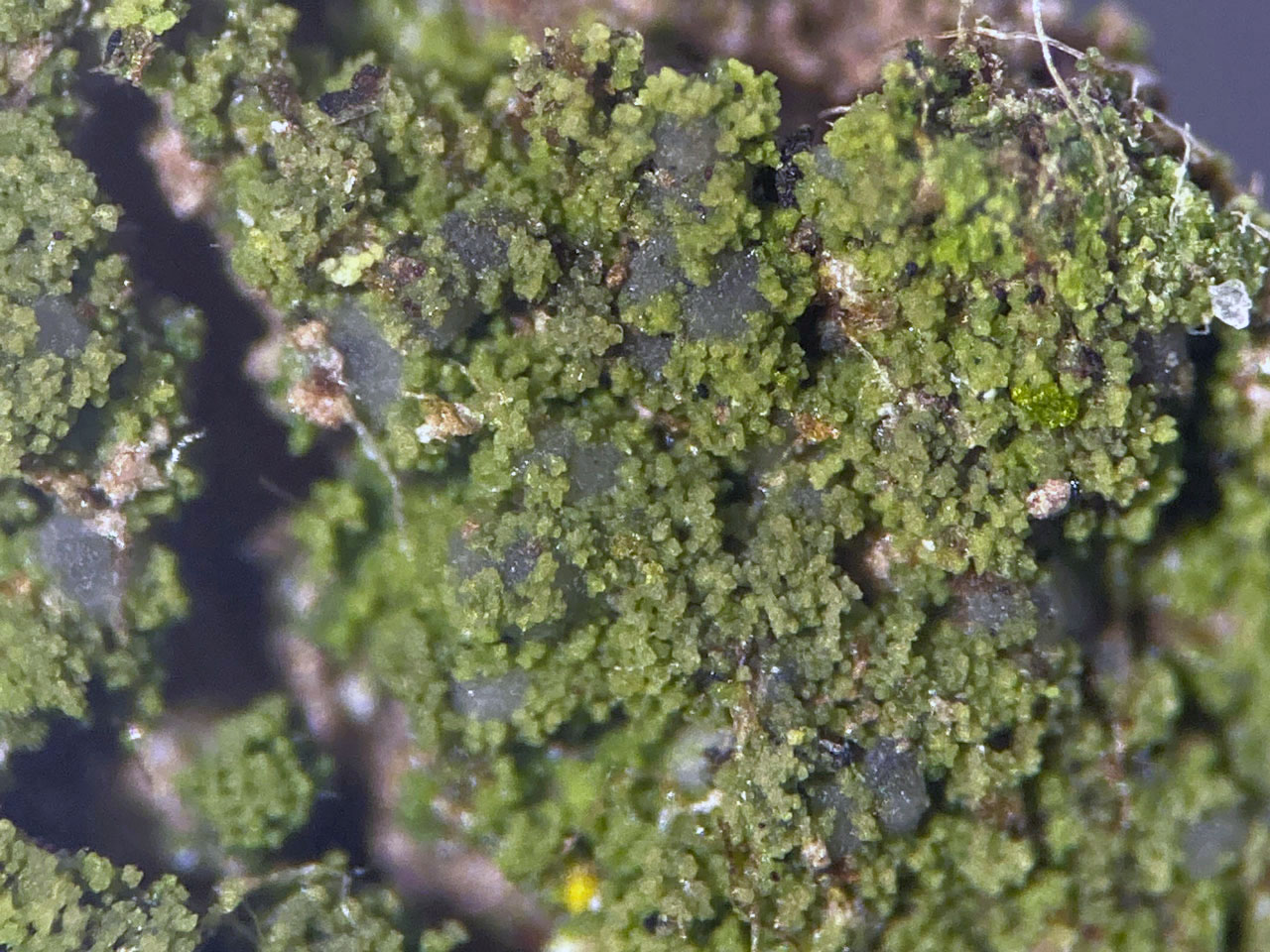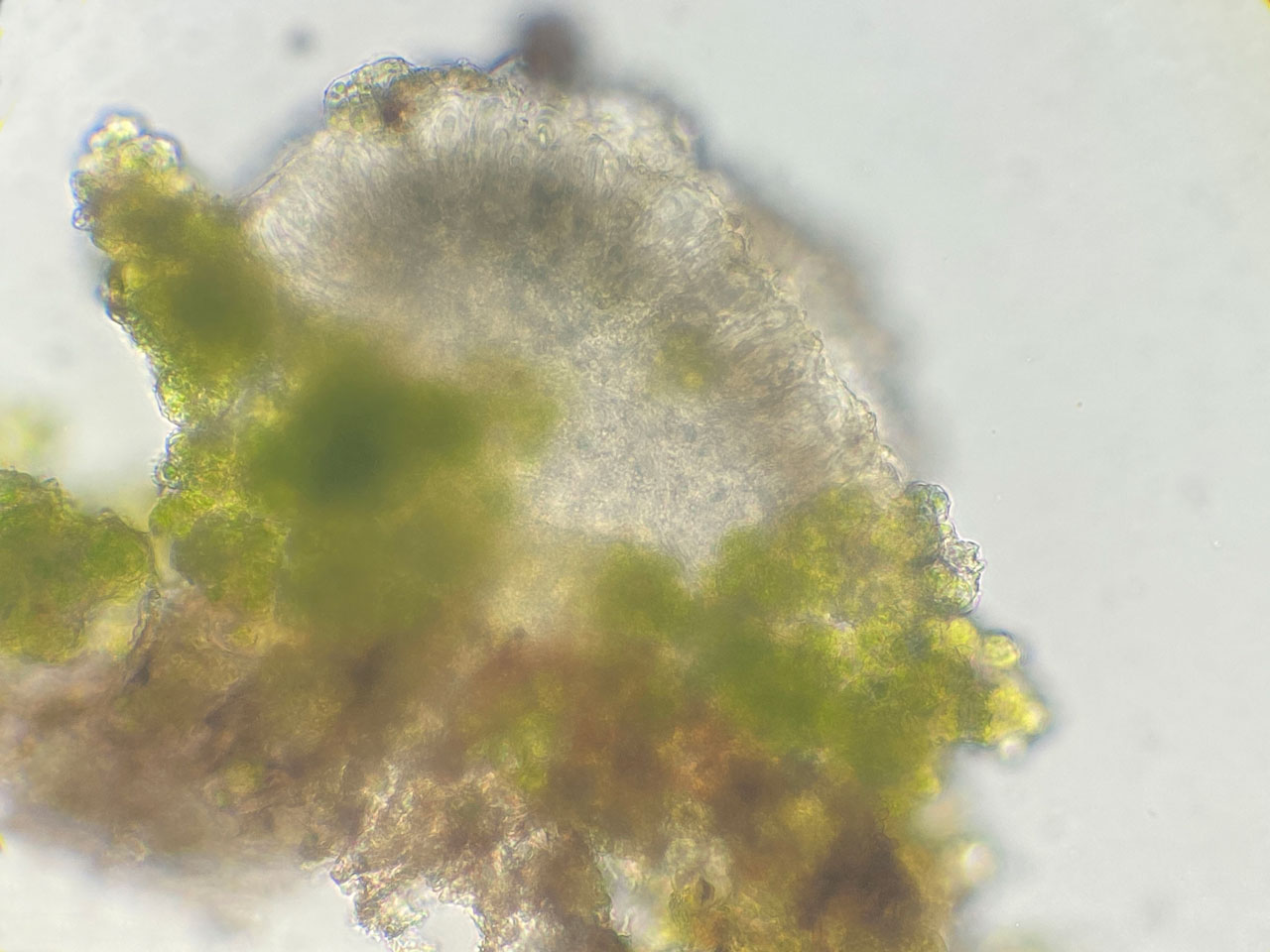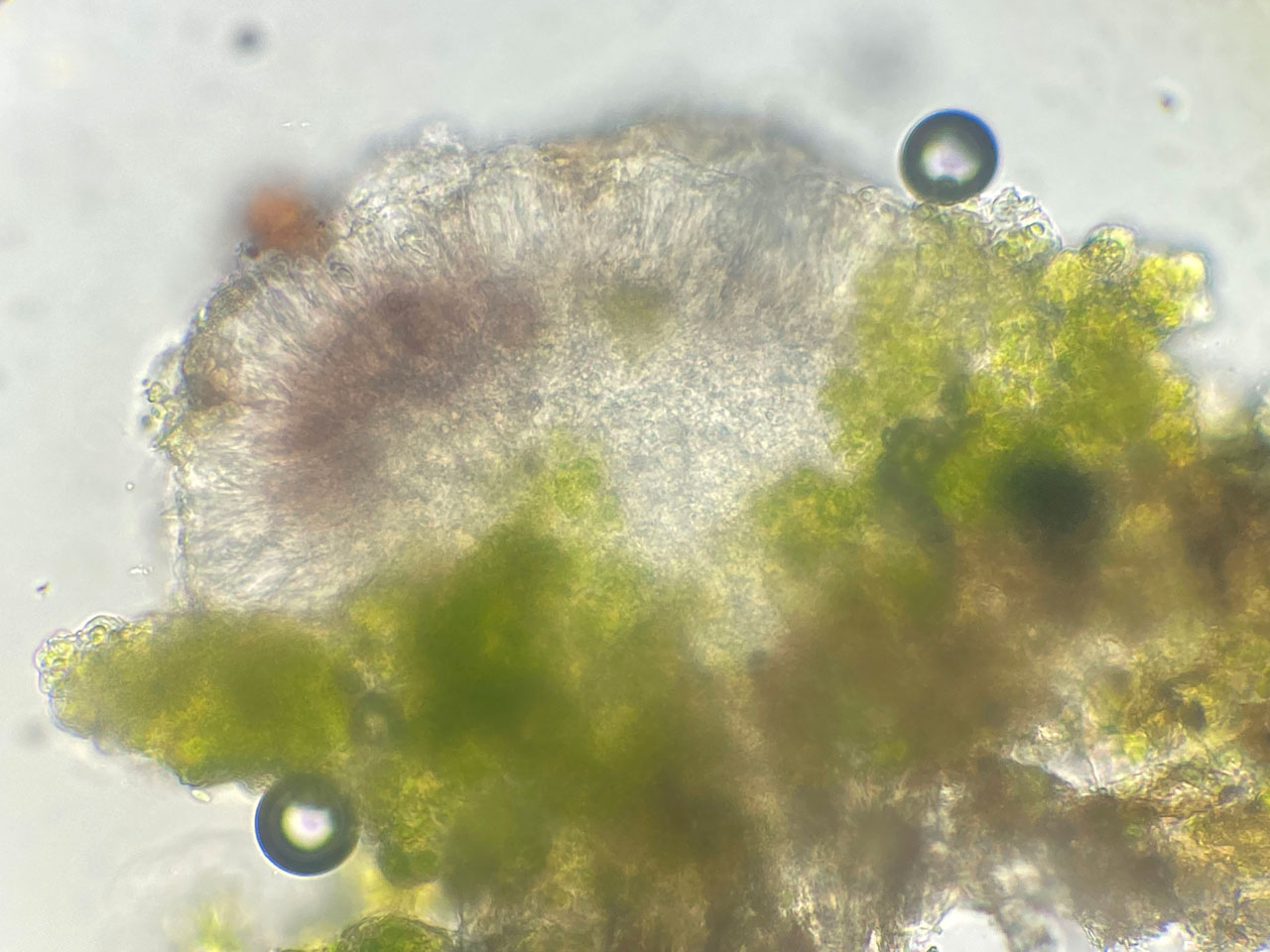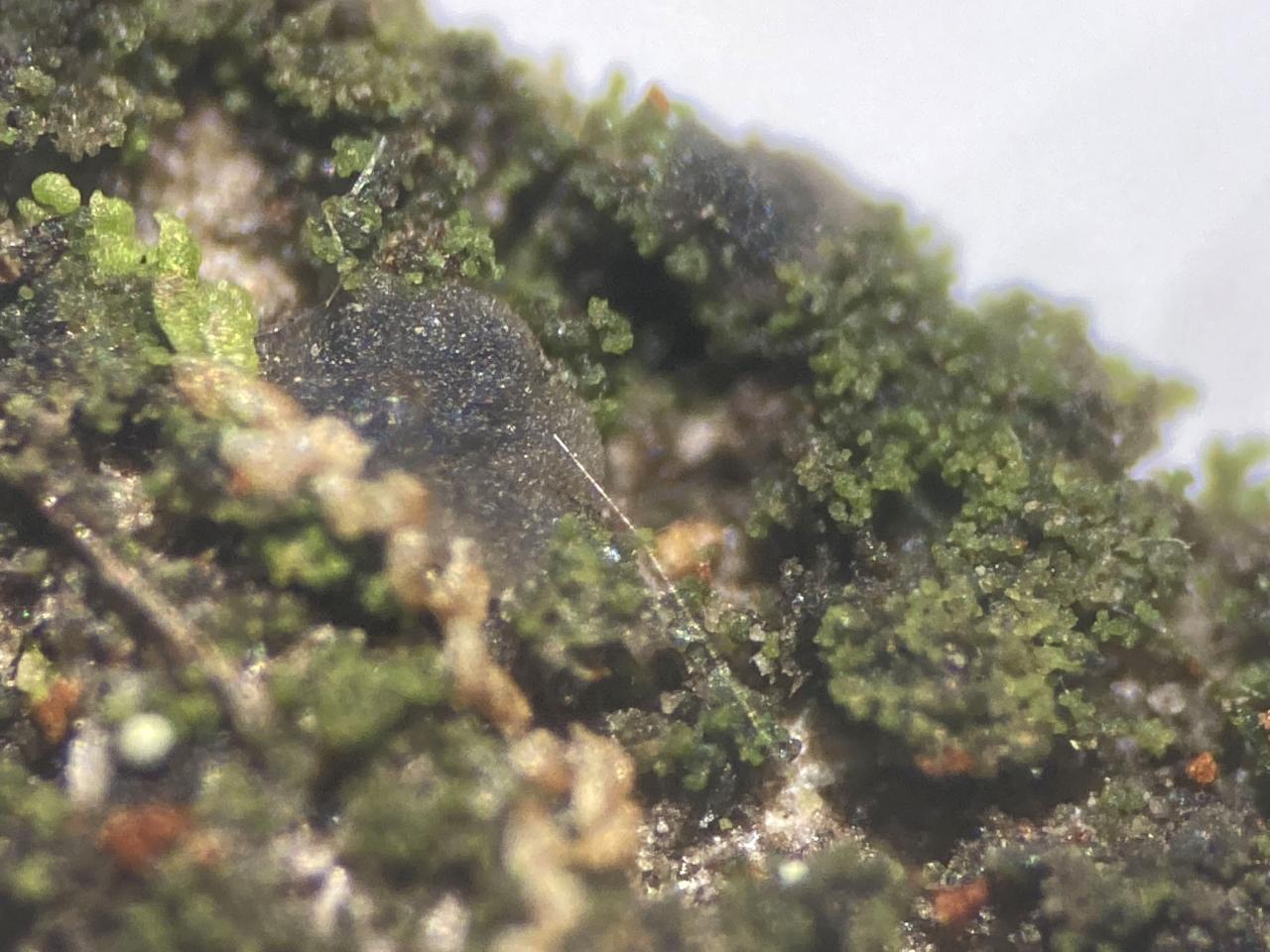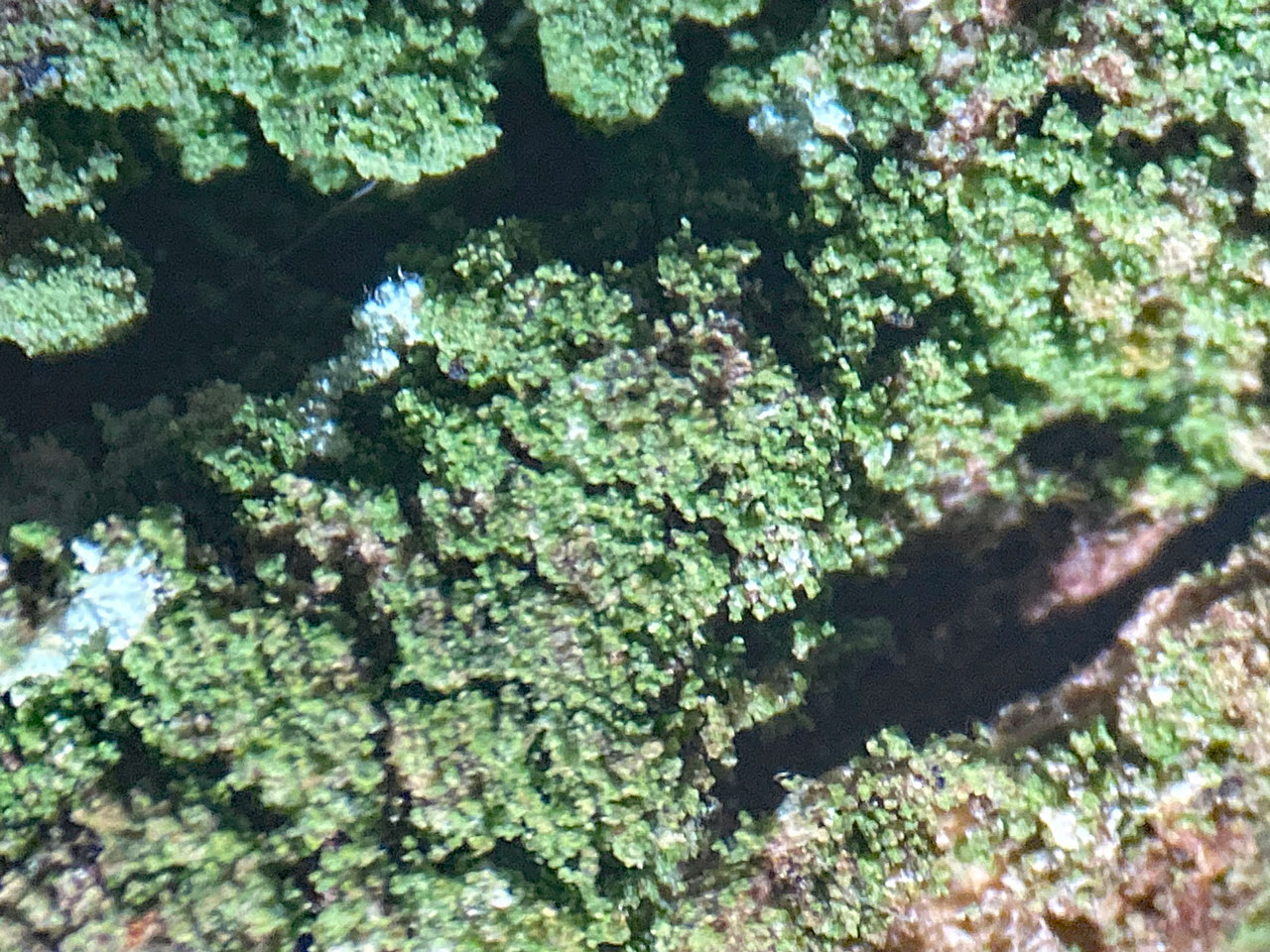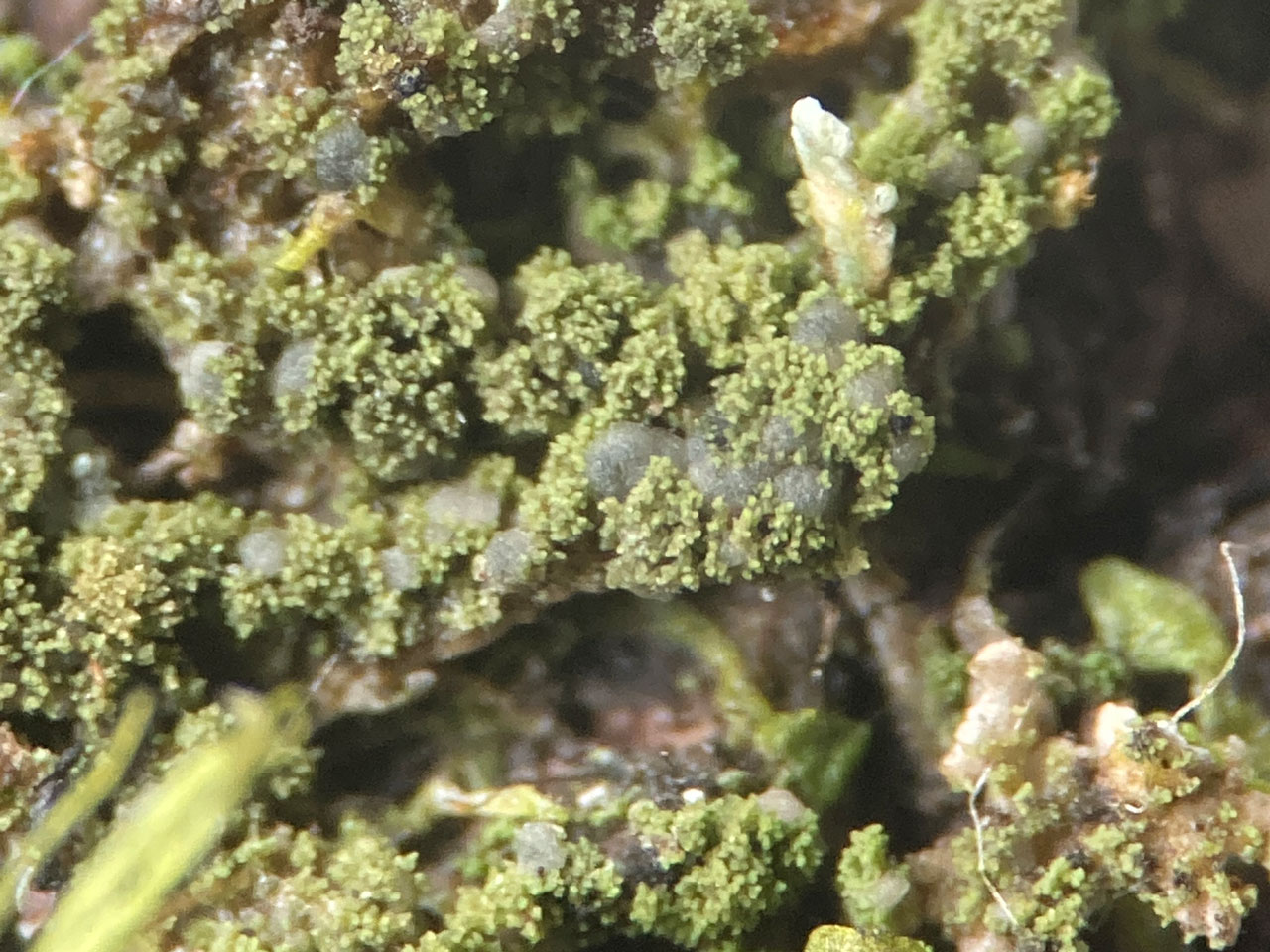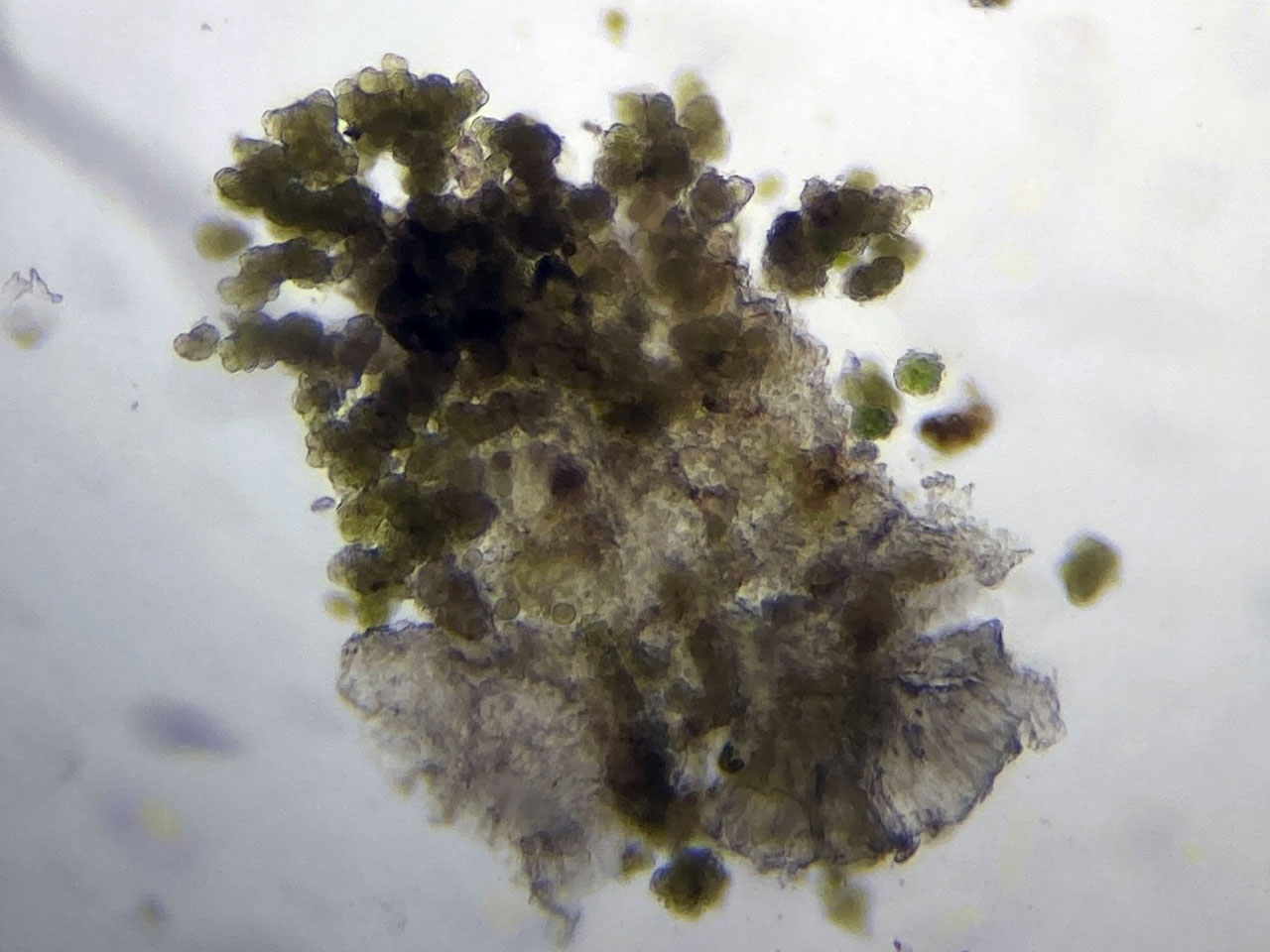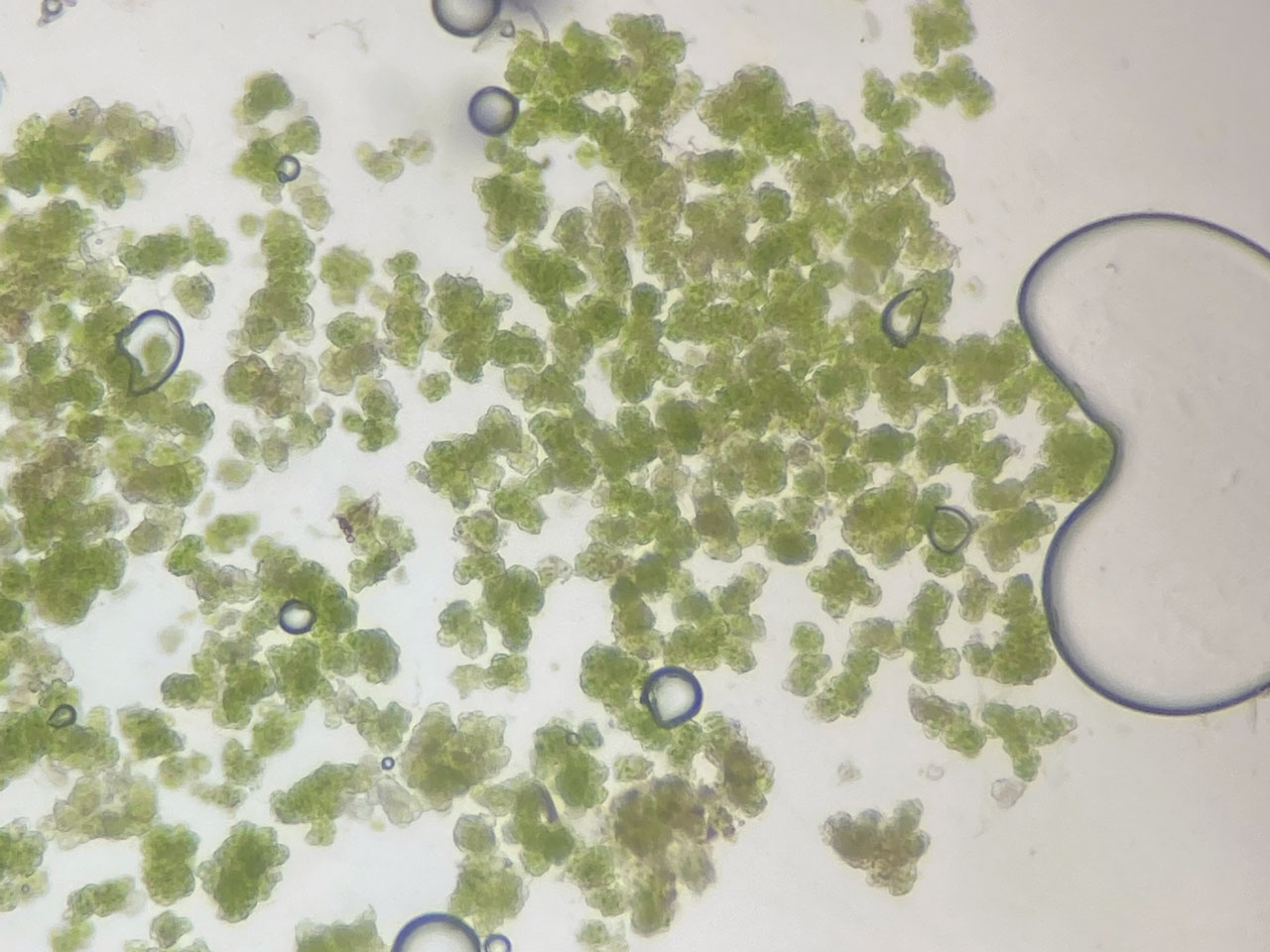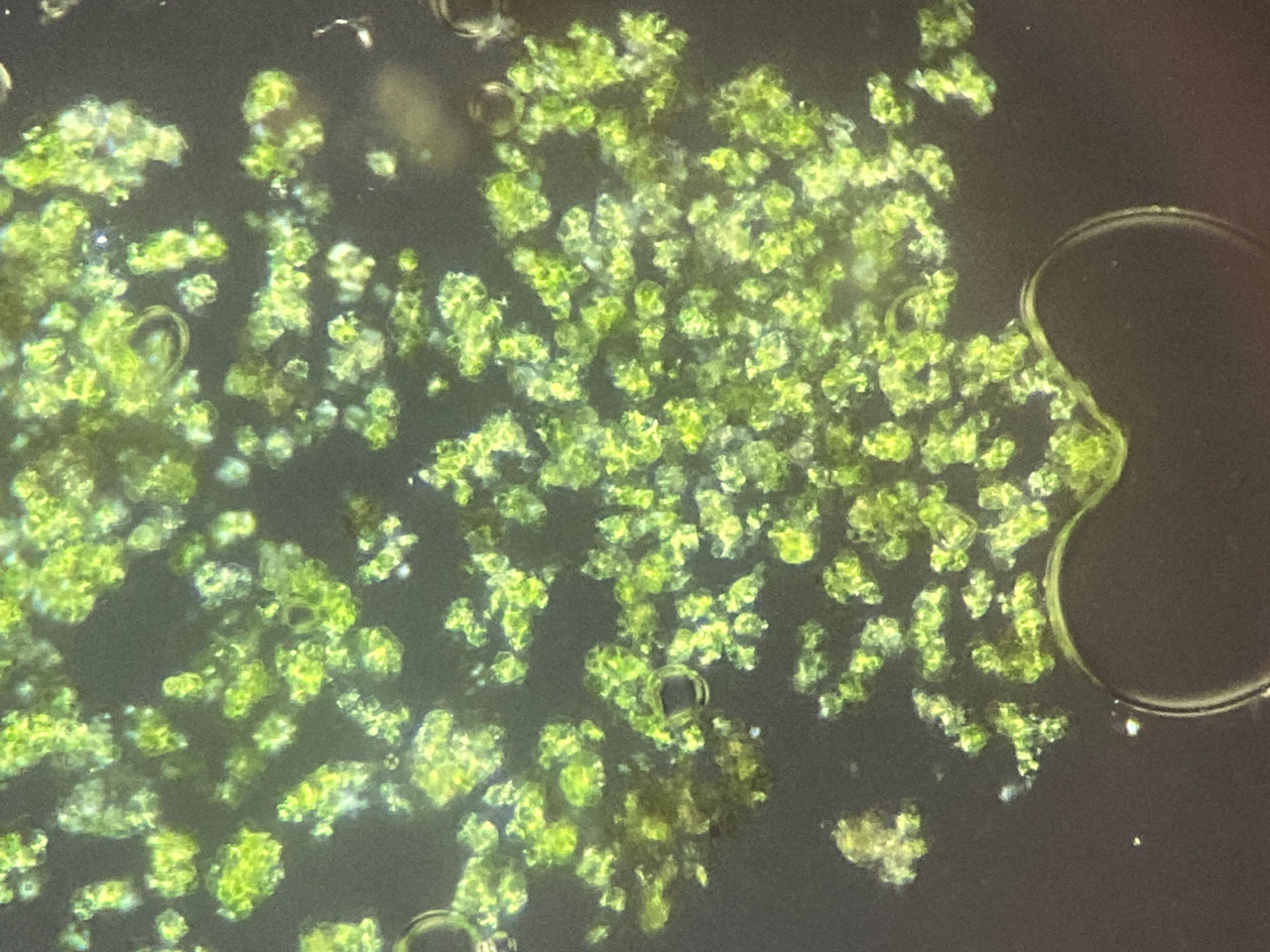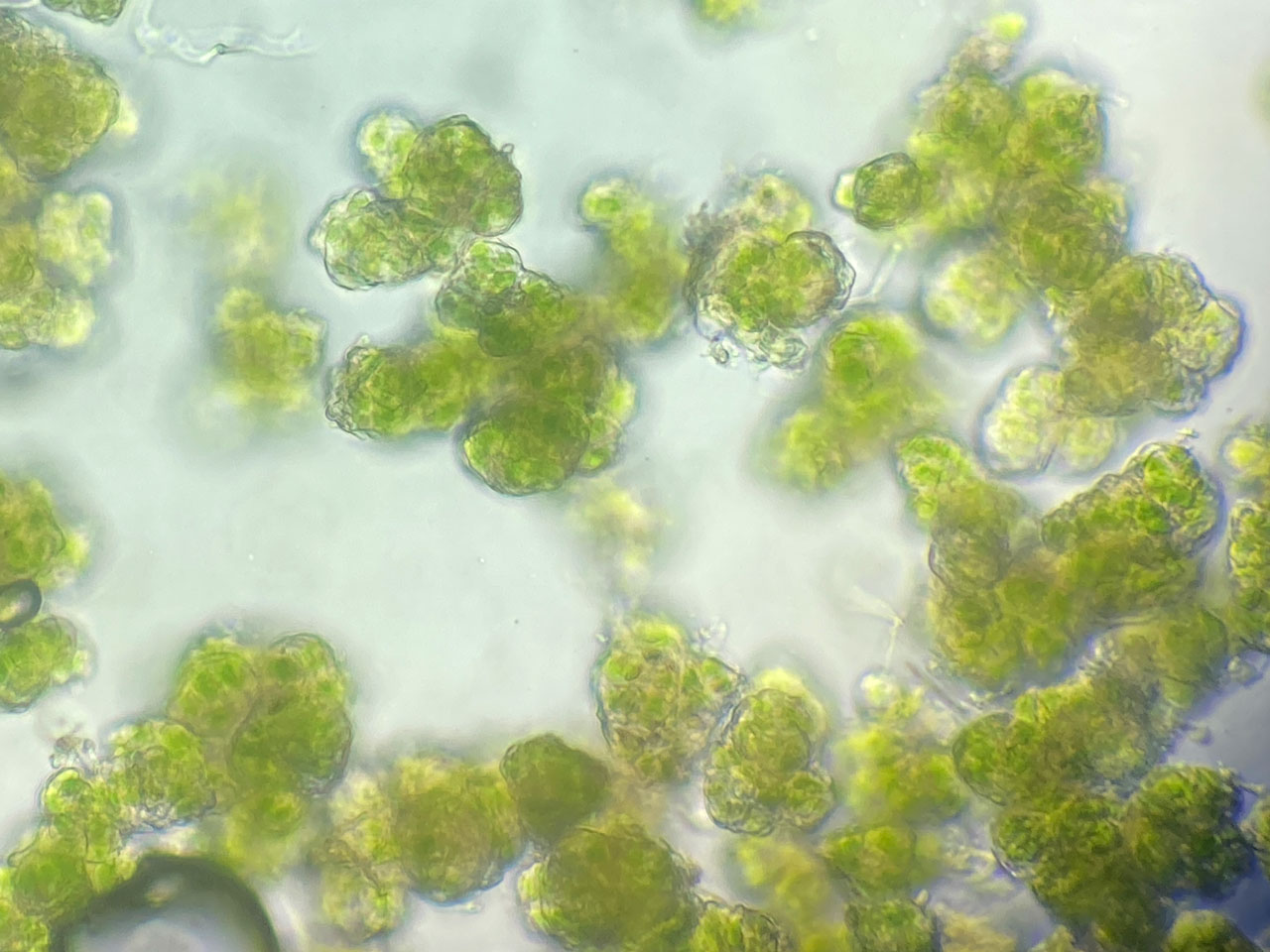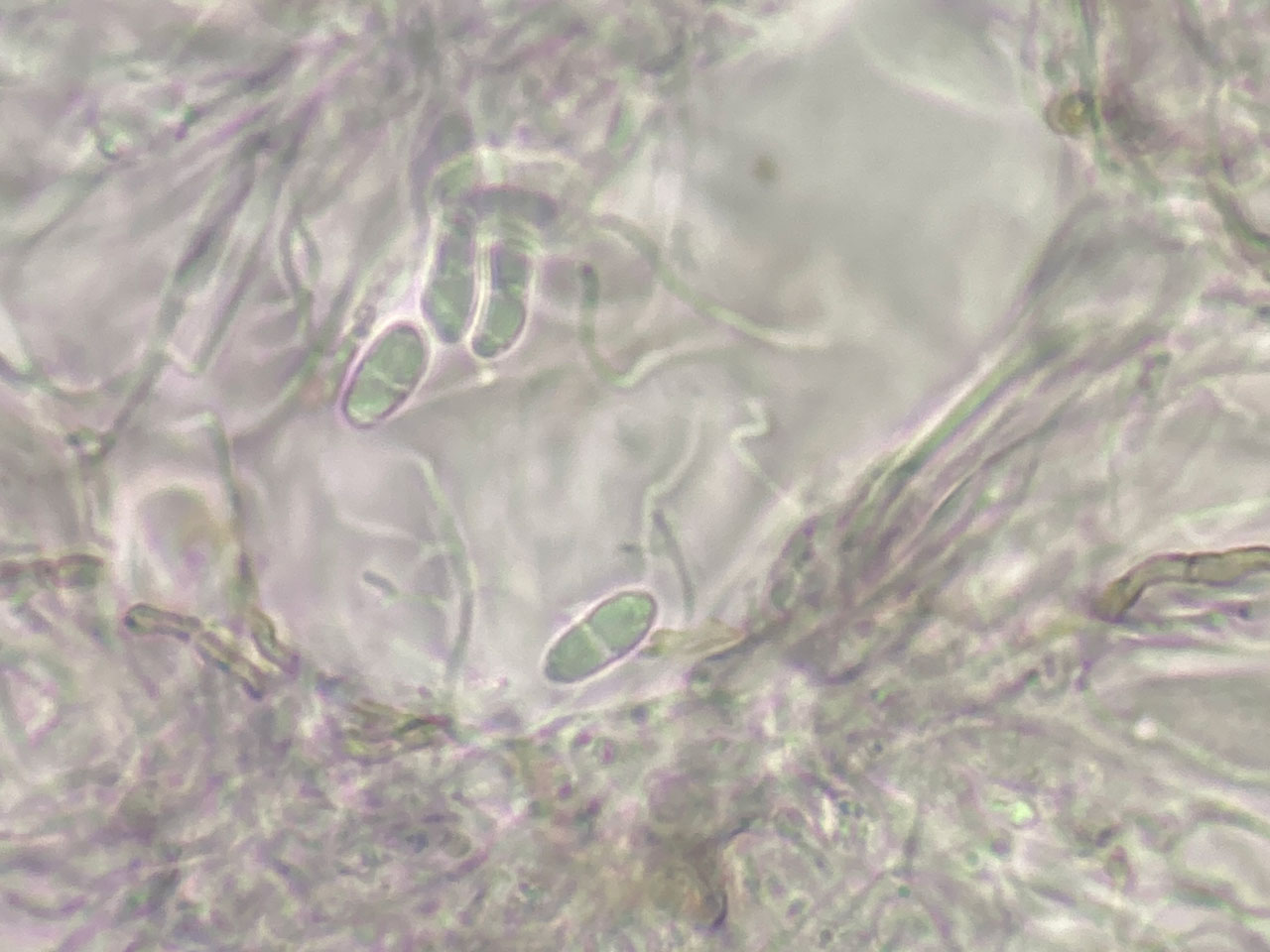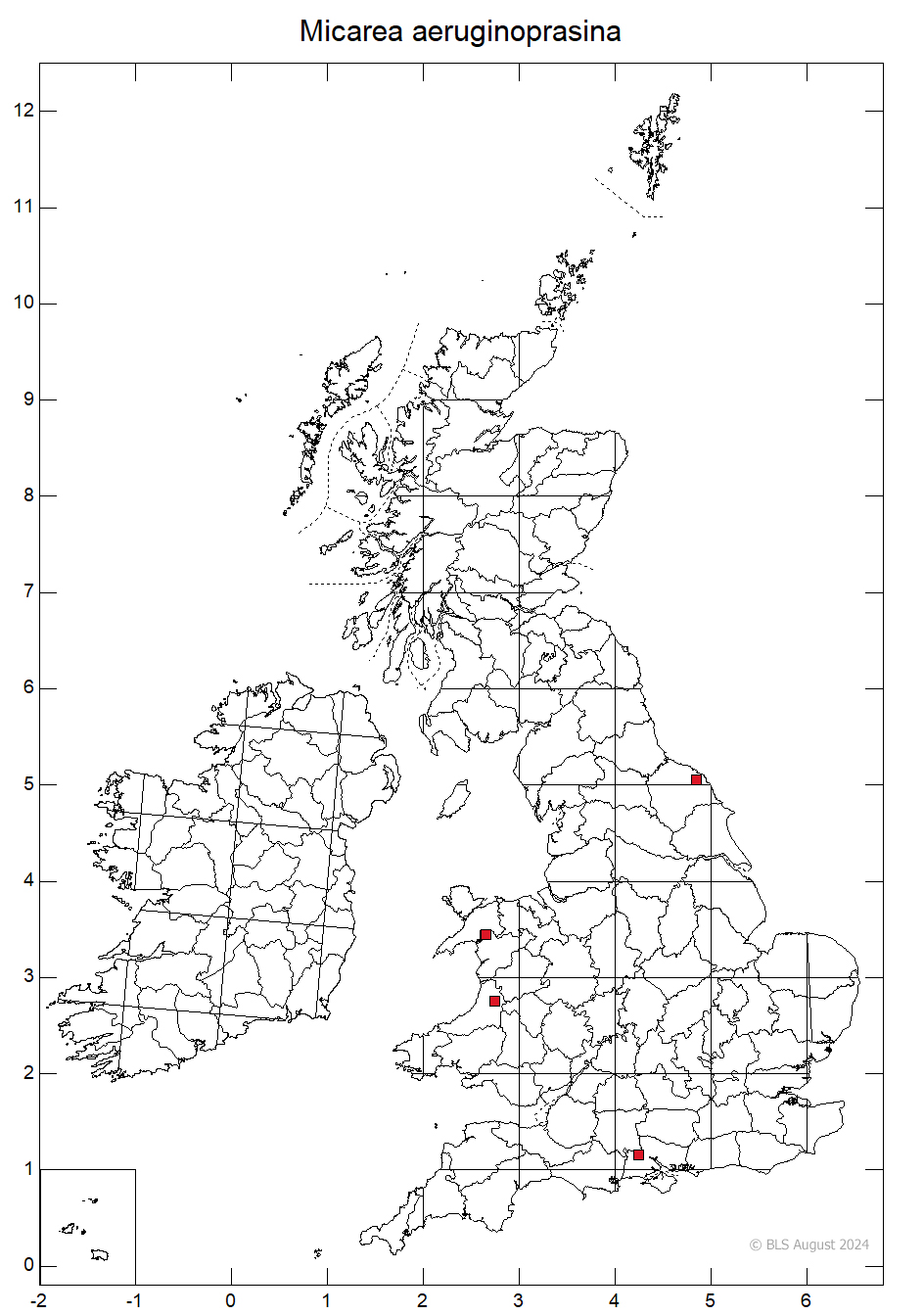Micarea aeruginoprasina
Crusts of isidiate Micarea prasina s. lat. taxa are a feature of acid bark and dead wood in old woodland, but their identity has long been obscure. Guzow-Krzemińska et al (2019) separated four species, of which three are now known in Britain. They are possible to separate when fertile, but unfortunately most thalli are sterile, in which case the species can only be reliable separated by sequencing. Micarea aeruginoprasina appears to be rarely fertile, so establishing its range and ecology will not be easy. To date, sequenced and fertile specimens indicate that it mainly occurs on bark but also on lignum in humid locations in oceanic woodlands but one specimen has been found on acid soil on a shaded bank.
Thallus thin in non-isidiate parts, film-like to minutely granular, giving rise to abundant green to dull green, branched to coralloid isidia, with POL+ granules. Apothecia adnate to slightly convex, pale cream to pale brown, grey or aeruginose, 0.1–0.5 mm diam. Exciple indistinct. Hymenium colourless, or locally pale brown and then K+ violet, C+ violet (Sedifolia-grey). Hypothecium colourless or with Sedifolia-grey, with POL+ granules. Paraphyses sparse, branched, 1–1.2 (–1.5) μm diam. Ascospores ellipsoidal to ovoid, (0–)1-septate, 9–14 × 4.5– 5.5 μm. Pycnidia not seen. Chemistry: K−, C−, Pd−. TLC: micareic acid.
Distinguished by the isidiate thallus and the frequent presence of Sedifolia-grey in the apothecium (but probably absent in pale apothecia) but the apothecia appear rare. M. isidioprasina is very similar; in the protologue (Guzow-Krzemińska et al, 2019) M. isidioprasina is said to lack Sedifolia-grey in the apothecium, but this pigment is locally present in the hymenium of at one British specimen, however, typical specimens lack Sedifolia-grey and have white to beige, or patchily grey apothecia. Micarea atroviridis has methoxymicareic acid and is often fertile, when the presence of Cinereorufa-green pigment in the apothecia is diagnostic.
On bark of young to old Oak in woodland, also on Alder bark and Oak and Holly lignum, potentially locally abundant in humid and shaded woods, but as nearly all the thalli are sterile, this is not clear. Appears to occupy more shaded and humid locations than Micarea atroviridis. One specimen has been found on acid soil on a shaded bank in an ancient pasture woodland in Buckinghamshire.

Initial records from West Wales, North Wales and the New Forest, but probably widespread in at least oceanic woods and by 2025 found in humid locations in Dumfriesshire (Lochwood Wood), the North York Moors and Buckinghamshire (Burnham Beeches).
Currently data deficient, but it seems unlikely to be threatened. Potentially a Notable species of less disturbed old woodland.
Cannon, P., Orange, A., Aptroot, A., Sanderson, N., Coppins, B. & Simkin, J. (2022). Lecanorales: Pilocarpaceae, including the genera Aquacidia, Byssoloma, Fellhanera, Fellhaneropsis, Leimonis and Micarea. Revisions of British and Irish Lichens 27: 1-48.
Guzow-Krzemińska, B., Sérusiaux, E., van den Boom, P.P.G., Brand, A.M., Launis, A., Łubek, A. & Kukwa, M. (2019). Understanding the evolution of phenotypical characters in the Micarea prasina group (Pilocarpaceae) and descriptions of six new species within the group. Mycokeys 57: 1–30.
Text by Neil A Sanderson based on Canon et al (2022)
